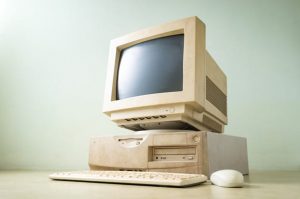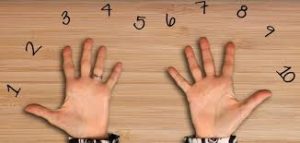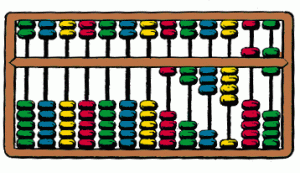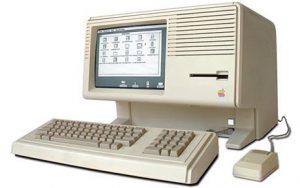Back to: COMPUTER SCIENCE JSS1
Welcome to class!
In today’s class, we will be talking about the historical development of computers. Enjoy the class!
Historical Development of Computers

Early counting devices (fingers, stones sticks, pebbles, cowries, grains, etc.)
Early counting devices are devices that were used in the early days to perform arithmetic operations such as the addition of numbers, subtraction and multiplication. Examples of early counting devices are fingers, toes, stones, sticks, pebbles, cowries among others.

Finger-counting, also known as dactylonomy, is the act of counting using one’s fingers. There are multiple different systems used across time and between cultures, though many of these have seen a decline in use because of the spread of Arabic numerals.
Finger-counting can serve as a form of manual communication, particularly in marketplace trading – including hand signalling during open outcry in floor trading – and also in games such as morra.

Finger-counting is known to go back to ancient Egypt at least, and probably even further back.
Mechanical counting devices – Abacus, Napier’s bones, Slide rule.
The abacus was one of the first adding machines. … He also created a device using rods, called Napier’s bones, to perform arithmetical calculations. These rods were widely used by accountants and bookkeepers.
The abacus device is an instrument used for counting as far back as 500 B.C. to make calculations easier, and to suit the various number systems. In the beginning, the abacus was just a board with stones or sticks. On the surface of the abacus, there were parallel notches or grooves.

An adapted abacus, invented by Tim Cranmer, called a Cranmer abacus is still commonly used by individuals who are blind. A piece of soft fabric or rubber is placed behind the beads so that they do not move inadvertently.
The slide rule:
It is also known colloquially in the United States as a slipstick, is a mechanical analog computer. The slide rule is used primarily for multiplication and division, and also for functions such as exponents, roots, logarithms, and trigonometry, but typically not for addition or subtraction.
Napier’s bones:
It is a manually-operated calculating device created by John Napier of Merchiston, Scotland for the calculation of products and quotients of numbers. The method was based on lattice multiplication and was also called ‘radiology’, a word invented by Napier himself.
Leibniz machine:
In 1671 the German mathematician-philosopher Gottfried Wilhelm von Leibniz designed a calculating machine called the Step Reckoner. (It was first built in 1673.) The Step Reckoner expanded on Pascal’s ideas and did multiplication by repeated addition and shifting. Leibniz was a strong advocate of the binary system.

Jacquard machine:
This a device fitted to a power loom that simplifies the process of manufacturing textiles with such complex patterns as brocade, damask and matelassé. It was invented by Joseph Marie Jacquard in 1804.
In our next class, we will be talking about Generation of Computers. We hope you enjoyed the class.
Should you have any further question, feel free to ask in the comment section below and trust us to respond as soon as possible.

Please I want a correct answer on this quiz question. The uses of slide rule: My answer was multiplication and division and also for exponents, roots, logarithmic and trigonometric functions except for addition and subtraction.
Which of the following are uses of the slide rule excerpt?
A. Multiplication
B. Division
C. Exponents
D. Subtraction.
I went for option D but I was marked wrong.
c
answer:c
The answer is option C
It’s C
What about Electro mechanical counting device and electronic counting device
The answer is C
c
answer:c
Great job. Keep it up